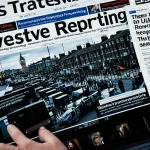The Influence of UK Women’s Fashion Trends on Personal Identity
Fashion in the UK serves as a powerful medium for self-expression, reflecting unique personalities amid prevailing UK women’s fashion trends. These trends often guide choices, yet personal identity remains central to how women interpret and adapt the styles available. UK women’s fashion trends influence self-expression by offering a palette from which to select elements that resonate personally, balancing individuality with cultural relevance.
Prevailing trends impact the shaping of personal aesthetics by framing what is culturally current, but women often modify these influences to fit their own identity narratives. For example, adopting a trend like the bold color palettes common in London street style can be a way to assert confidence, while integrating vintage accessories preserves a personal touch.
Also to read : What Are the Key Trends in UK Women’s Evening Wear?
Societal perceptions further deepen this influence. Clothing functions as a social signal, shaping how others perceive someone’s role, status, or personality. UK women’s fashion trends thus participate in identity formulation by interacting with cultural norms and expectations. This dynamic allows women not only to follow fashion but to communicate their stories, beliefs, or moods, making personal identity both influenced by and a contributor to evolving fashion trends.
Historical Evolution of UK Women’s Fashion and Identity
UK fashion history reveals a dynamic journey where women’s identity and clothing styles have deeply intertwined. Starting from the Victorian era, fashion emphasized modesty and strict social codes. Women’s clothing reflected their societal roles, with corsets and long skirts symbolizing decorum and restraint. This period set the groundwork for fashion as a visible marker of identity.
Also to see : How Can British Women Transform Their Style with Timeless Fashion Pieces?
The 1960s Mod movement revolutionized style, introducing bold colours, geometric patterns, and shorter hemlines that challenged traditional norms. Women embraced freedom of expression through these trends, aligning fashion with social and cultural shifts like feminism and youth rebellion. This era highlights how cultural movements directly influenced fashion and the formulation of new female identities.
Throughout UK fashion history, societal changes—ranging from wartime austerity to post-war prosperity—have shaped women’s wardrobes and self-perception. Iconic styles from different decades continue to be reinterpreted today, blending heritage with contemporary personal expression. The ongoing evolution underscores how fashion remains a vivid tool for communicating both individuality and shared cultural values, reflecting the inseparable link between style evolution and women’s identity.






